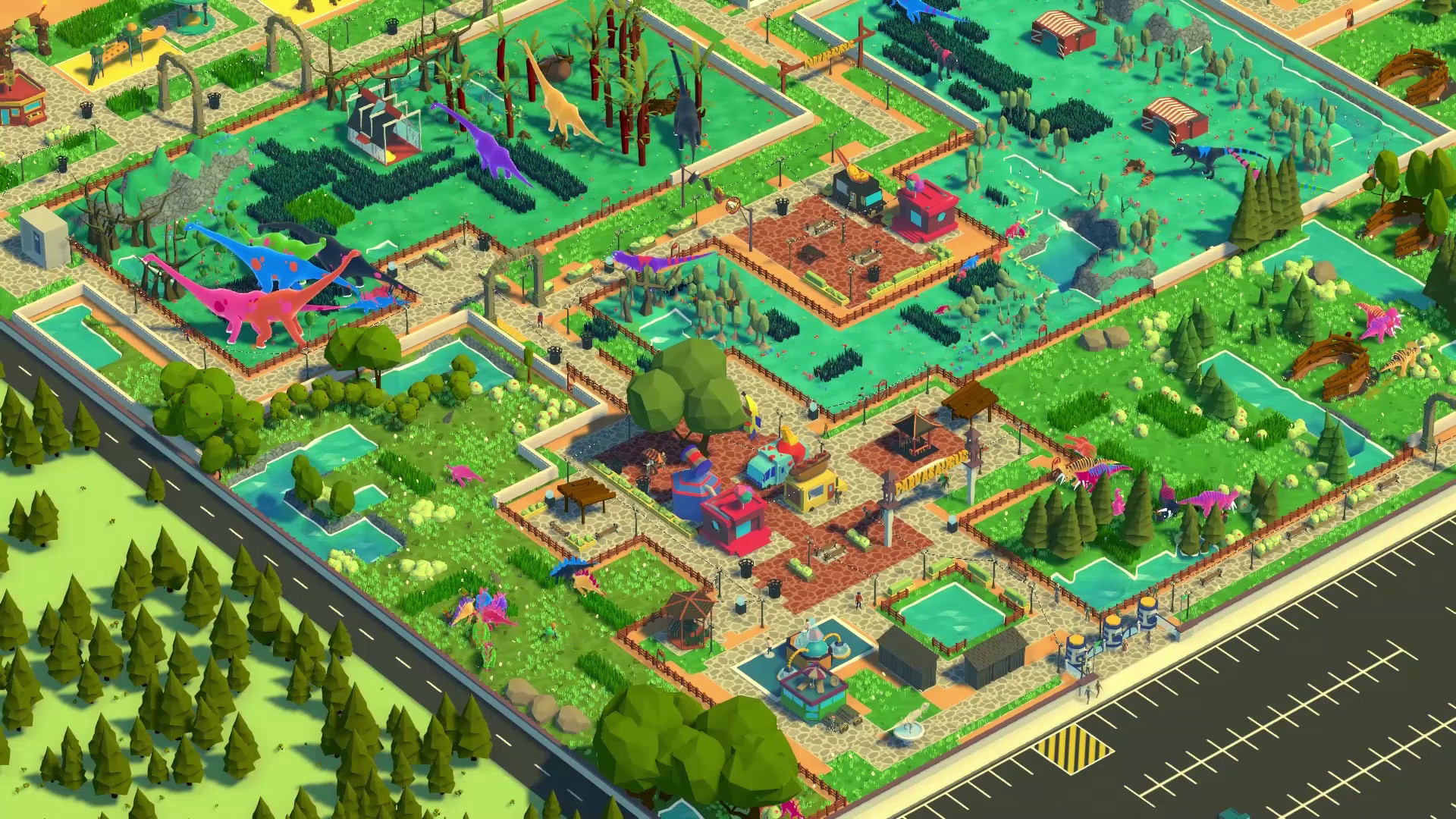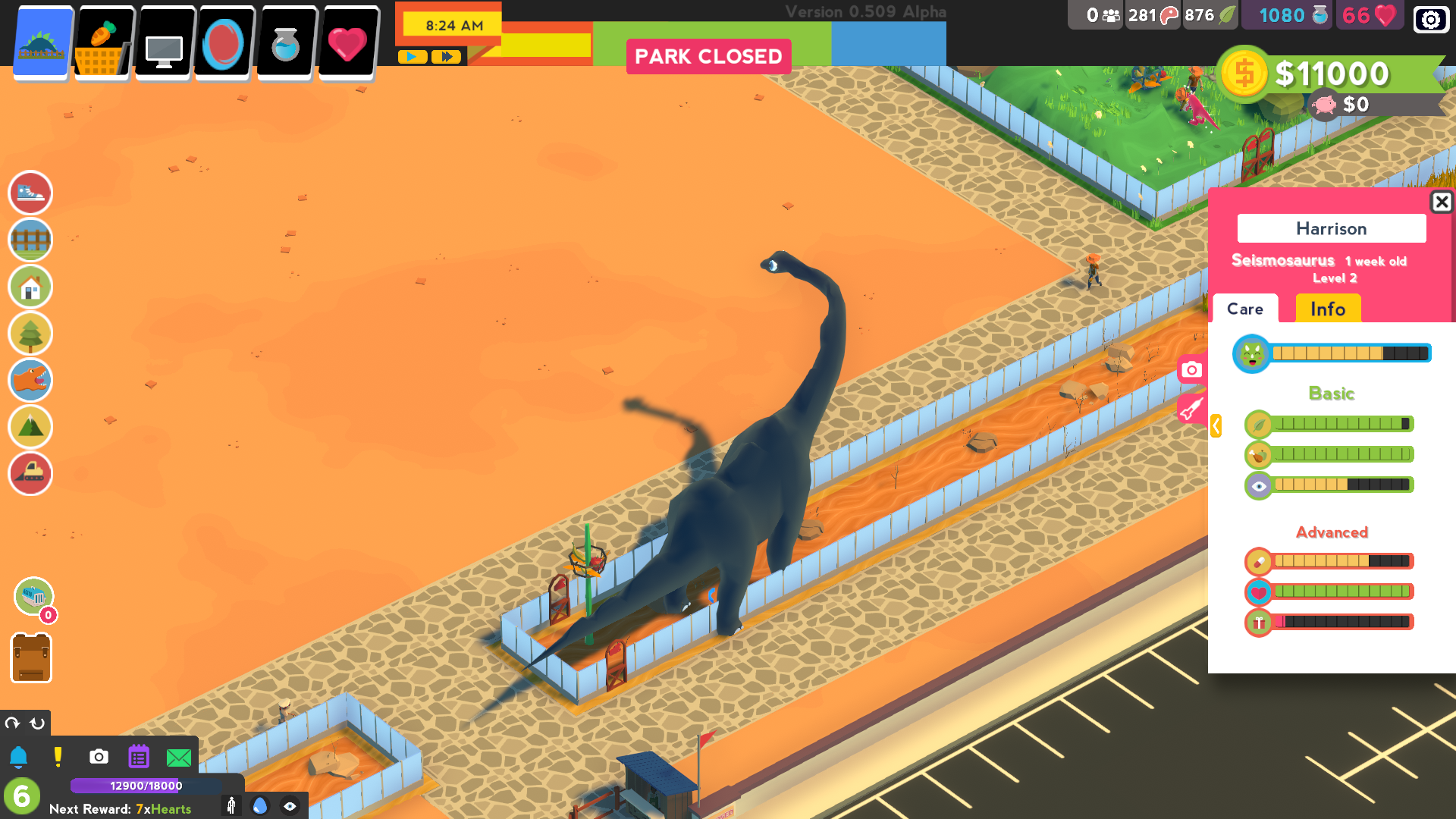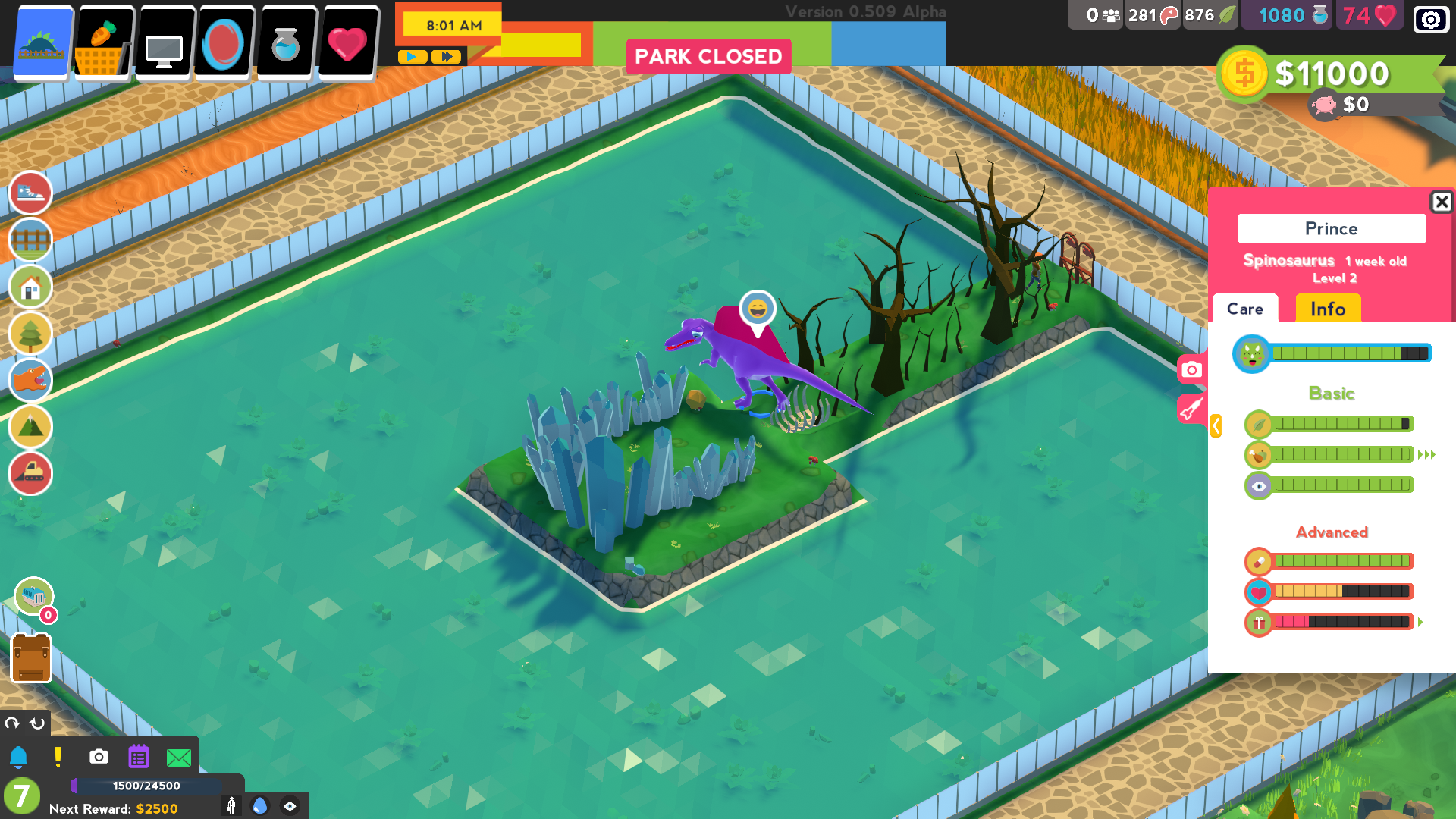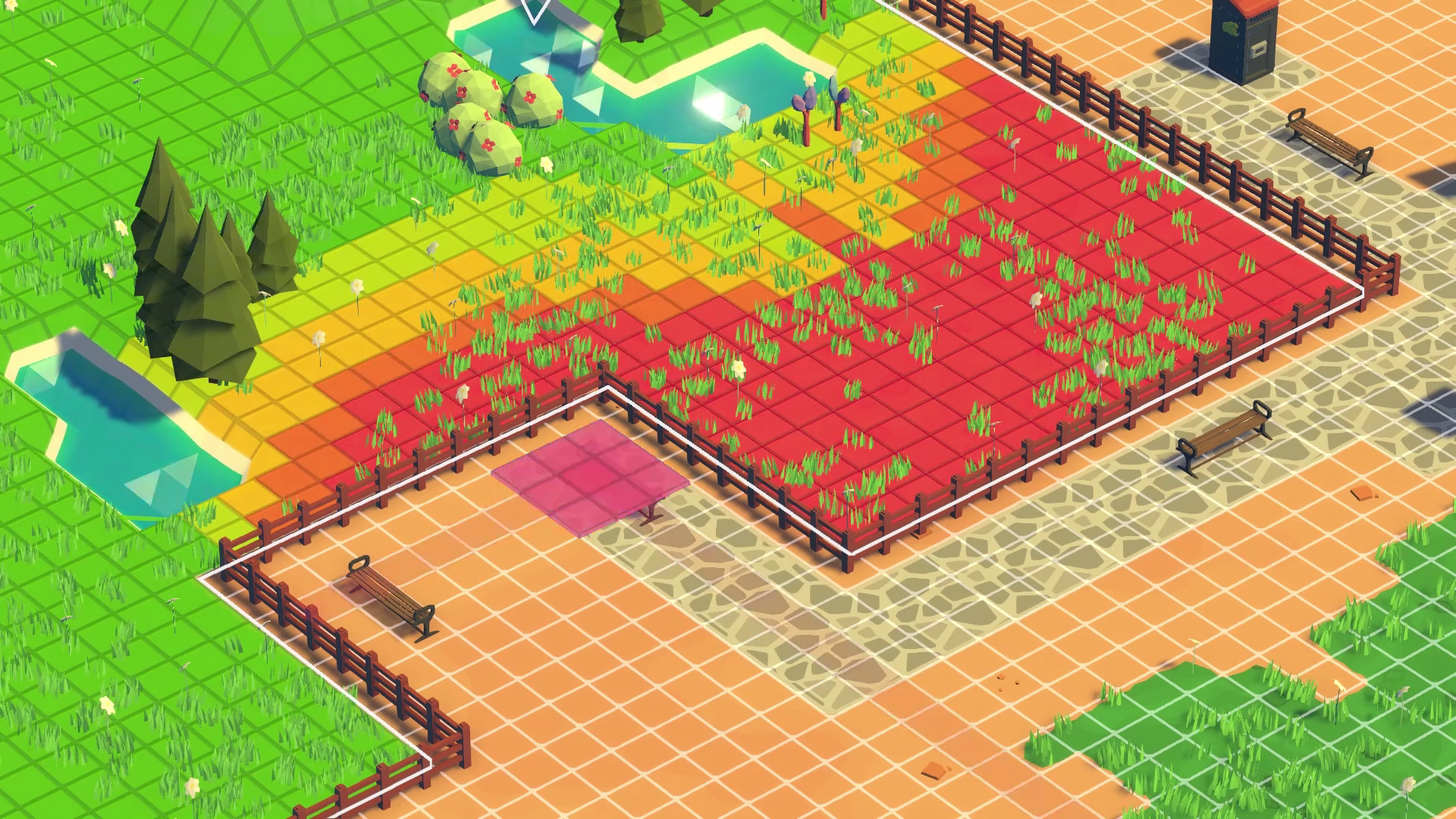Parkasaurus is a sim that excels when you're designing your own dino exhibits
Manage a park or have more fun exploring the silly science of dinosaur husbandry in a custom game.

A lonely island in a swamp, a bunch of eerie looking obelisks, and a flooded canyon are some of the least strange exhibits I've tried in the early access demo for Parkasaurus. This park management simulator is a colorful, low-poly take on managing a dinosaur zoo. Its standard game mode revolves around hiring employees, unlocking dinosaur eggs to hatch, and catching dinosaurs when they escape from the carefully crafted enclosures, as they do in every damn Jurassic Park movie. It's going to be in Early Access for the next 6-8 months, and in that time the developers plan to expand on many of the features already in the game to deepen the simulation.
So far, Parkasaurus is relatively light (for a park sim) on the financial and managerial duties of park ownership. I had way more fun focusing on where it excels: in the creative tasks of building and cultivating fun exhibits for dinosaurs. Sometimes I play The Sims by building a neighborhood of elaborate homes and furnishing them with everything but people. I'm happy to report that you can play Parkasaurus the same way. After a quick dip in the standard gameplay mode I pivoted to a custom game with unlimited cash and dinosaur eggs, to try my hand at unrestrained exhibit building.
Mad seismoscientist
Designing an exhibit takes into account a number of ecological and social considerations that add up to a pretty deep system for a cute game about technicolor dinosaurs. With control over terrain height, water placement, and terrain tiles I’m able to use the exhibit panel to control the biome of each enclosure. Parkasaurus’ 23 dinosaur species each have their own preference for one of the nine available biomes.
Filling an exhibit with sand tiles allows me to construct a desert, savannah, or grassland biome by controlling the amount of water and terrain height variance. With low water availability, the enclosure will remain a desert. By clicking and dragging the water tool, I can create either a grassland or a savannah, depending on whether I add hills or leave it a flatter space.
The exhibit pane for my enclosures includes a graph with ruggedness on the vertical axis and wetness on the horizontal for whichever base tile (grass, sand, or mud) I lay down inside. Changing the terrain will moves the point on the graph so I always know what to add or subtract to get the biome I’m looking for. After getting a handle on the basics, which takes a matter of minutes thanks to Parkasaurus’ easy menus, the fun was in building unlikely and impractical exhibits to see how I could push the technicalities of the system in my favor.

My favorite creation, for instance, is my Seismosaurus enclosure. Lennon, Starr, and Harrison are some of the biggest dinosaurs available to hatch in the game. It’s no surprise then that they prefer large enclosures and are less happy in tight spaces.
But I wondered if they they really cared how comfortably spacious an exhibit is, or if Parkasaurus only calculates the total square area of the enclosure. So I set out to experiment.
The biggest gaming news, reviews and hardware deals
Keep up to date with the most important stories and the best deals, as picked by the PC Gamer team.
My first attempt is a 6x30 tile enclosure for just one Seismosaurus, Lennon. It’s too small. He shows his displeasure by stomping on the wall of his enclosure, taking a bit of its health. Unfortunately dino escapes are a danger even in custom games, so I elongate the enclosure more, to maybe twice the length. Lennon is still rather unimpressed.
In a feat of massively over-doing it, I drag the skinny enclosure around the entire park area like dinosaur running track. To my delight, Lennon is pleased with his ridiculously-shaped exhibit. Now he just wants some new friends because he's a herd animal and feels lonely. Lennon is needy, but he’s adorable so I get him some friends. Fortunately my oversized exhibit has plenty of space for him and his band-mates. After that, my exhibit experiments only get stranger.

Picky parasaurolophus
Lennon and his friends aren’t the only needy dinos in my park, it turns out. Every species of dinosaur is a bit picky about its surroundings and accommodations. After accounting for the proper biome for housing my formerly extinct friends, I need to furnish them with toys, specialty feeders, and ensure they have privacy when they need it.
Like animals in a real zoo, the dinosaurs of Parkasaurus like to have places to retreat away from the beady eyes and sweaty palms of tourists. The privacy view can be toggled to show a heatmap of the privacy in any of my exhibits. Areas close to walking paths where visitors stop to watch have low privacy. Large exhibits will have areas high in privacy at their center, furthest from the visitors. I’m also able to place special tall grass tiles that create private zones, use terrain height to obstruct visibility, or place shelters for dinosaurs to sleep in.
Each species also has its own preference for socialization. Many of the herbivore species are herd animals that take comfort in having others of their species in the same enclosure. Loner species not only prefer having an exhibit to themselves, but may even want a larger exhibit than other dinosaurs of their size.

Creative ceratopsia
Parkasaurus’ current early access version features a serviceable park management mode and will later add scenarios for additional challenge. Months of added depth may make for a more satisfying sim, but as it exists now, I prefer the breezier focus of exploring the bounds of its exhibit-building system. Simulation fiends will hopefully find plenty of exploring to do in the standard mode when the game fully launches next year. For the builders like me, it's already a great way to play with dinosaurs.

Lauren has been writing for PC Gamer since she went hunting for the cryptid Dark Souls fashion police in 2017. She accepted her role as Associate Editor in 2021, now serving as self-appointed chief cozy games and farmlife sim enjoyer. Her career originally began in game development and she remains fascinated by how games tick in the modding and speedrunning scenes. She likes long fantasy books, longer RPGs, can't stop playing co-op survival crafting games, and has spent a number of hours she refuses to count building houses in The Sims games for over 20 years.

